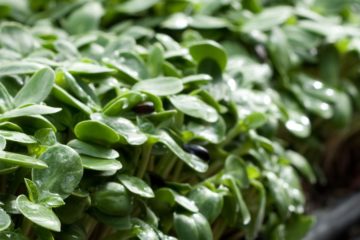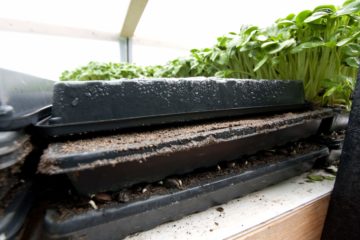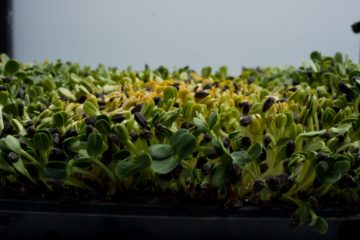The starting point for microgreens production is the crop. Without a crop you cannot have products and without products you have nothing to offer customers and without customers you have no one to place an order and without orders you cannot generate revenue.
As we covered in the Principles of Microgreens Crop Planning Post, crops have five basic elements needed for proper crop planning:
- A unique name (more about this later)
- Sowing rate (g of seed/tray)
- Expected yield (by weight)
- Days to maturity (DTM) from soaking seed
- Days to germination (DTG) from soaking seed
Now, another optional component is tray size, but we are going to enable that by making a crop variant.
So what do we mean by a crop variant? A crop variant is a variation of a crop you are already growing. What makes a variation? A change in its details, such as DTM or expected yield.
So let’s look at this with an example. We’ll continue to work with sunflower.
SeedLeaf does not require you to enter a tray size for a crop. Though it does, kind of, assume you use a standard tray size. That said, you decide on the tray each crop should grow in. Typically, growers use the same size and type of tray for all crops, but not always. In our case, we are going to assume you are using a standard 10 x 20 tray for growing your cut sunflower. We call this 1020 tray.
Using out components up above, this would be our base sunflower crop:
- Name: Sunflower
- Sowing rate: 125g seed/tray
- Expected Yield: 600g
- DTM: 8
- DTG: 4
So when you go to create a product, and you choose a crop, “sunflower” will appear in the drop down menu. If all your crops are growing in the same tray, then we don’t need to think about the tray type as it will be the only tray available.
But let’s say you grow sunflower in two different-sized trays: one for your cut products and one for selling live:
- Cut product tray size: 10″ x 20″ (1020)
- Live tray product size: 10″ x 10″ (1010)
Then you would want each of these to be its own crop, or its own variant of the sunflower crop.
The original can stay as it is, OR the name can be changed to “Sunflower -1020”).
The new variant for the 1010 tray would look like this:
- Name: Sunflower – 1010
- Sowing Rate: 63g / tray (half of the 1020 rate)
- DTM: 8 (may be 7 days if you want to deliver it while it is a bit younger)
- DTG: 4
- Yield: Does not apply to live trays
So we now have two sunflower crop variants:
- “Sunflower – 1020”
- “Sunflower – 1010”
Each has their own production elements which make them unique enough to be their own crop. Again, SeedLeaf does not know what tray size you are using and it does not need to know – only you do. It just needs to know the yield of cut crops to plan properly to meet product needs.
You could also theoretically have variants based on DTM or sowing rate and just need to account for that in the crop name and the crop elements. So, you could have numerous variants:
- “Sunflower – 1020”
- “Sunflower – 1010”
- “Sunflower – 7 DTM” or “Sunflower Young”
- “Sunflower – 5×5”
What is important is that the crop elements change with the tray size or growth cycle as needed. This approach gives you lots of flexibility with crop variation.
In the future, a tray size option may be added to crops in SeedLeaf to account for soil costs as trays with different dimensions utilize different amounts of soil and thus have different soil costs.



0 Comments